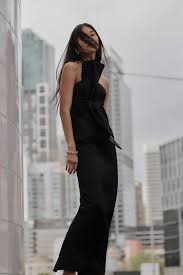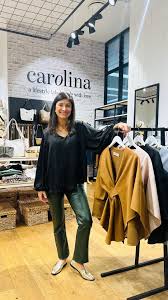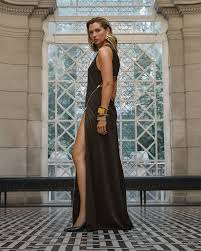Championing Sustainability: Ethical UK Clothing Brands Leading the Way
Ethical UK Clothing Brands: Leading the Way Towards Sustainable Fashion
In recent years, the fashion industry has faced increasing scrutiny over its environmental and ethical practices. As consumers become more conscious of the impact of their purchasing decisions, there has been a growing demand for sustainable and ethical clothing options. In response to this demand, a number of UK-based clothing brands have emerged as leaders in the field of ethical fashion.
People Tree
People Tree is a pioneer in the world of sustainable fashion, offering a wide range of clothing made from organic cotton and other eco-friendly materials. The brand is committed to fair trade practices and works closely with artisans and producers in developing countries to create beautiful, ethically-made garments.
Thought
Thought is another UK brand known for its commitment to sustainability and ethics. The brand uses natural, renewable fabrics such as bamboo, hemp, and organic cotton to create stylish and eco-friendly clothing for men and women. Thought also prioritises fair working conditions throughout its supply chain.
Komodo
Komodo is a British brand that specialises in contemporary, sustainable fashion. The brand’s collections feature organic cotton, hemp, Tencel, and other eco-friendly materials. Komodo also places a strong emphasis on transparency and ethical production practices.
These are just a few examples of the many ethical UK clothing brands that are leading the way towards a more sustainable fashion industry. By supporting these brands and choosing ethically-made garments, consumers can make a positive impact on both the environment and the lives of garment workers around the world.
5 Benefits of Choosing Ethical UK Clothing Brands: Empowerment, Sustainability, Fairness, Transparency, and Conscious Consumerism
- Support fair trade practices and empower artisans in developing countries.
- Promote sustainable materials and reduce the environmental impact of clothing production.
- Ensure fair wages and safe working conditions for garment workers.
- Offer transparency in their supply chain, allowing consumers to make informed choices.
- Encourage conscious consumerism and raise awareness about ethical fashion practices.
Challenges of Choosing Ethical UK Clothing Brands: Cost, Availability, Trends, Visibility, and Material Sourcing
- Higher price point compared to fast fashion brands
- Limited availability of styles and sizes
- May not always meet the latest fashion trends
- Some ethical brands may have limited marketing and visibility
- Sourcing sustainable materials can be challenging and impact product variety
Support fair trade practices and empower artisans in developing countries.
Ethical UK clothing brands that support fair trade practices play a crucial role in empowering artisans in developing countries. By establishing partnerships with these artisans and ensuring fair wages and working conditions, these brands not only promote sustainable livelihoods but also preserve traditional craftsmanship. Through their commitment to ethical sourcing and production, these brands contribute to the economic empowerment of communities in need, fostering a more inclusive and equitable global fashion industry.
Promote sustainable materials and reduce the environmental impact of clothing production.
Ethical UK clothing brands play a crucial role in promoting sustainable materials and reducing the environmental impact of clothing production. By prioritising the use of organic cotton, bamboo, hemp, and other eco-friendly fabrics, these brands help minimise the harmful effects of traditional textile manufacturing processes on the environment. Through their commitment to sustainable practices, ethical UK clothing brands contribute to a more environmentally conscious fashion industry that aims to preserve natural resources and reduce carbon emissions.
Ensure fair wages and safe working conditions for garment workers.
Ethical UK clothing brands prioritise ensuring fair wages and safe working conditions for garment workers, setting a positive example in the fashion industry. By upholding these standards, these brands not only support the well-being of workers but also promote a more sustainable and ethical approach to manufacturing. This commitment to fair labour practices not only enhances the quality of life for garment workers but also fosters a sense of trust and transparency between consumers and the brands they choose to support.
Offer transparency in their supply chain, allowing consumers to make informed choices.
Ethical UK clothing brands offer transparency in their supply chain, providing consumers with valuable information about the journey of their garments from production to purchase. By disclosing details about sourcing, manufacturing processes, and labour conditions, these brands empower consumers to make informed choices that align with their values. This transparency not only fosters trust between brands and consumers but also encourages accountability and drives positive change within the fashion industry towards more sustainable and ethical practices.
Encourage conscious consumerism and raise awareness about ethical fashion practices.
Ethical UK clothing brands play a vital role in encouraging conscious consumerism and raising awareness about ethical fashion practices. By prioritising sustainability, fair trade, and transparent supply chains, these brands educate consumers about the impact of their purchasing decisions on the environment and society. Through their commitment to ethical practices, they inspire customers to make more informed choices and support a fashion industry that values people and the planet. This proactive approach not only promotes a more sustainable future but also fosters a culture of responsible consumption that benefits both individuals and the global community.
Higher price point compared to fast fashion brands
One notable drawback of ethical UK clothing brands is their higher price point in comparison to fast fashion brands. The use of sustainable materials, ethical production practices, and fair wages for workers all contribute to the increased cost of ethically-made garments. While investing in ethical fashion may require a larger upfront financial commitment, it is important to consider the long-term benefits of supporting sustainable practices and contributing to a more responsible fashion industry. By prioritising quality over quantity and understanding the true value of ethically-produced clothing, consumers can make a positive impact on both the environment and society as a whole.
Limited availability of styles and sizes
One notable drawback of ethical UK clothing brands is the limited availability of styles and sizes. Due to the focus on sustainable and ethical production methods, these brands often have smaller production runs and may offer a more curated selection of designs. This can sometimes result in a narrower range of styles and sizes available for consumers to choose from, making it challenging for individuals with specific preferences or body types to find suitable options. However, as the demand for ethical fashion continues to grow, it is hoped that these brands will expand their offerings to cater to a more diverse range of customers while maintaining their commitment to sustainability and ethics.
May not always meet the latest fashion trends
One potential drawback of ethical UK clothing brands is that they may not always align with the latest fashion trends. Due to their focus on sustainability and ethical practices, these brands often prioritise timeless designs and quality over fleeting trends. While this approach ensures that their garments are durable and made to last, it may result in a more classic or understated aesthetic that does not always reflect the current fashion zeitgeist. However, for consumers who value sustainability and ethical production methods, this trade-off may be seen as a worthwhile compromise in the pursuit of a more conscious wardrobe.
Some ethical brands may have limited marketing and visibility
One notable con of ethical UK clothing brands is their limited marketing and visibility compared to mainstream fashion labels. Due to their focus on sustainable practices and ethical production, these brands may allocate fewer resources to traditional marketing strategies, resulting in lower brand awareness among consumers. As a result, even though they offer high-quality, ethically-made garments, these brands may struggle to reach a wider audience and compete with larger fashion companies in terms of visibility and market share. This lack of exposure can hinder their growth potential and impact on the industry, despite their commendable ethical standards.
Sourcing sustainable materials can be challenging and impact product variety
One notable challenge faced by ethical UK clothing brands is the sourcing of sustainable materials, which can have an impact on product variety. Due to the limited availability and higher costs of sustainable fabrics, brands may face constraints in offering a wide range of designs and styles to consumers. This limitation can potentially restrict creativity and innovation in fashion collections, making it more challenging for brands to cater to diverse consumer preferences. Despite this hurdle, many ethical UK clothing brands are actively working to overcome sourcing challenges by exploring new sustainable materials and production methods, ultimately striving to strike a balance between sustainability and product variety.







